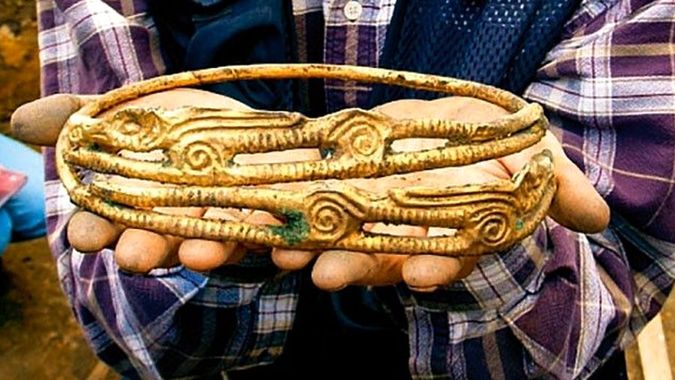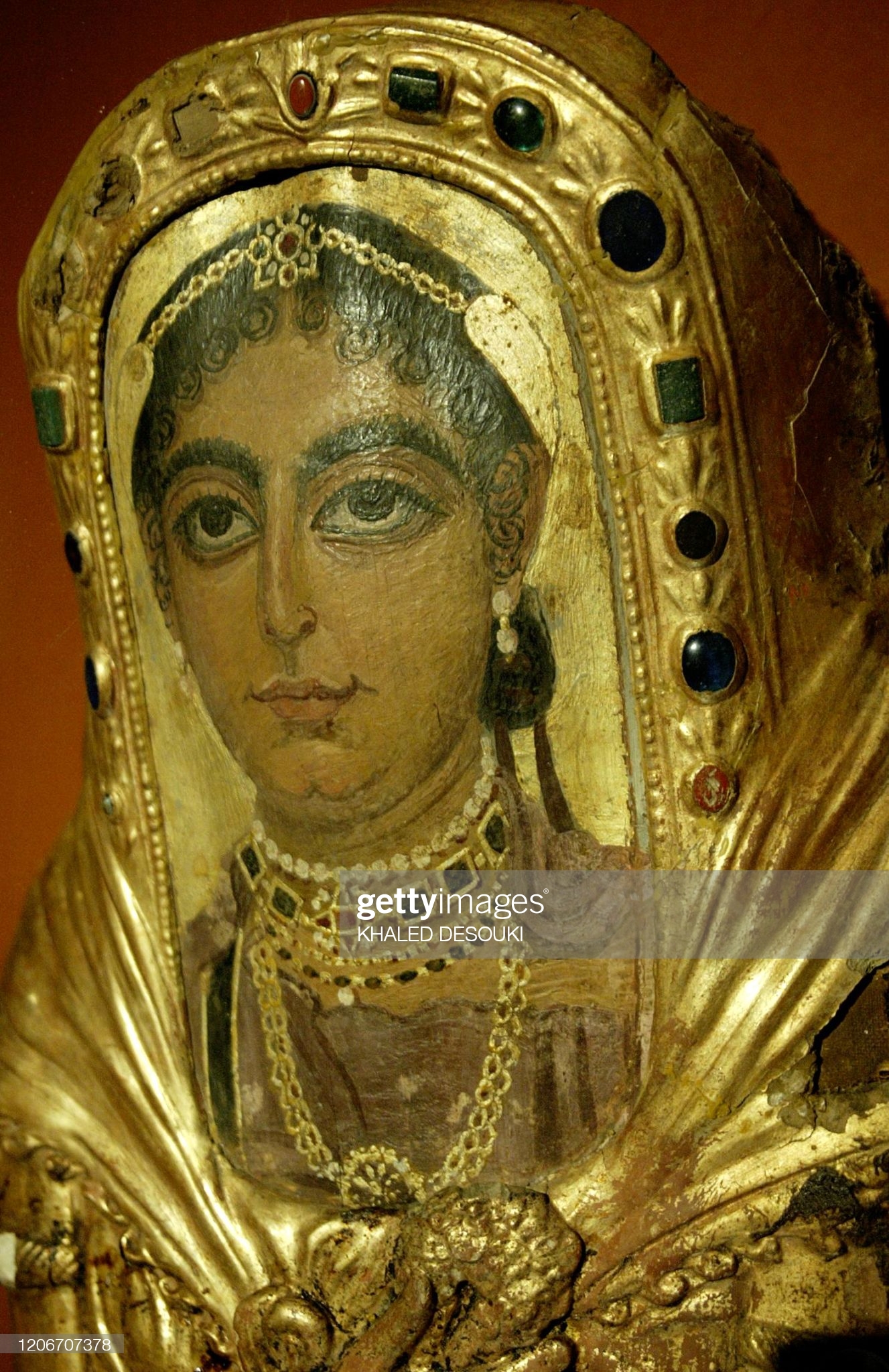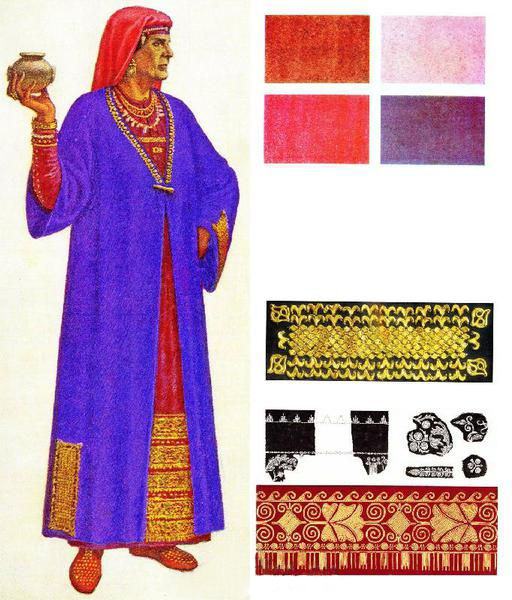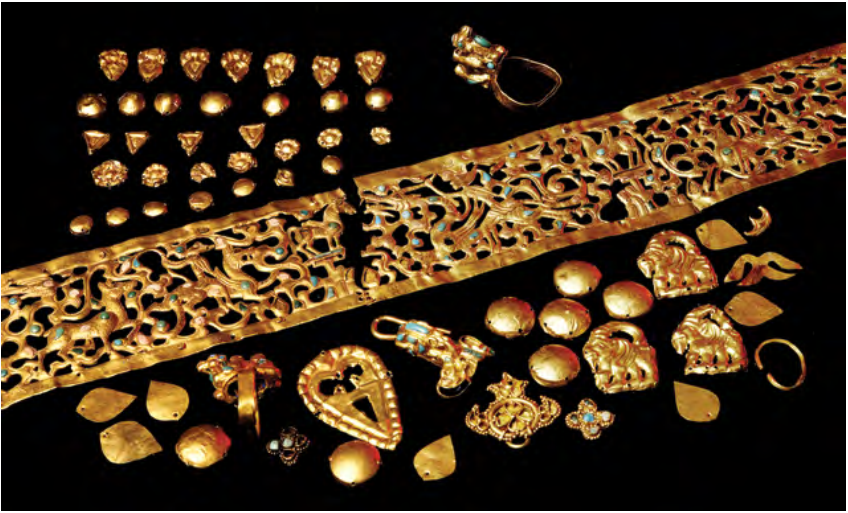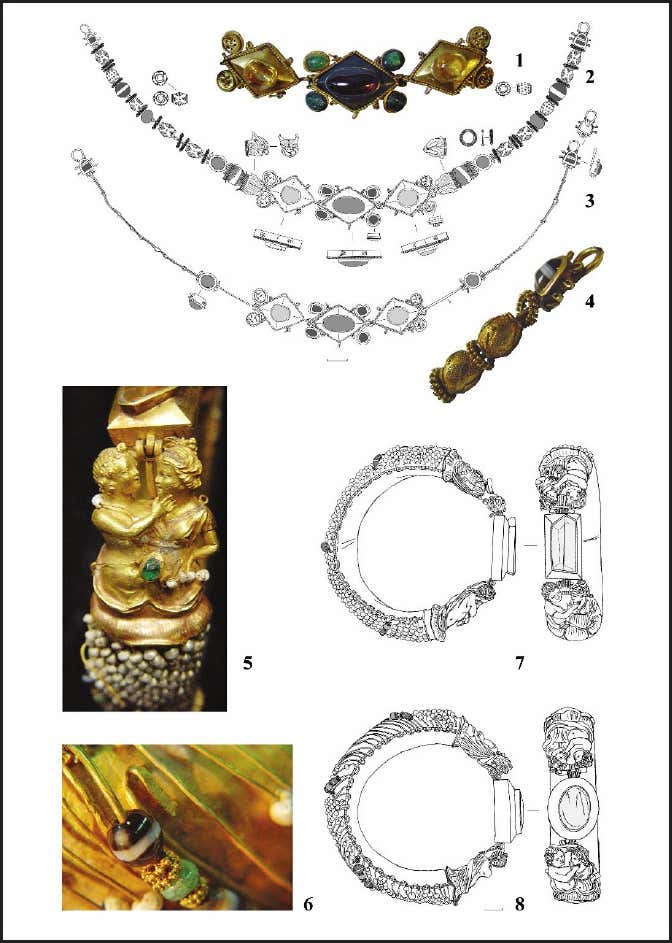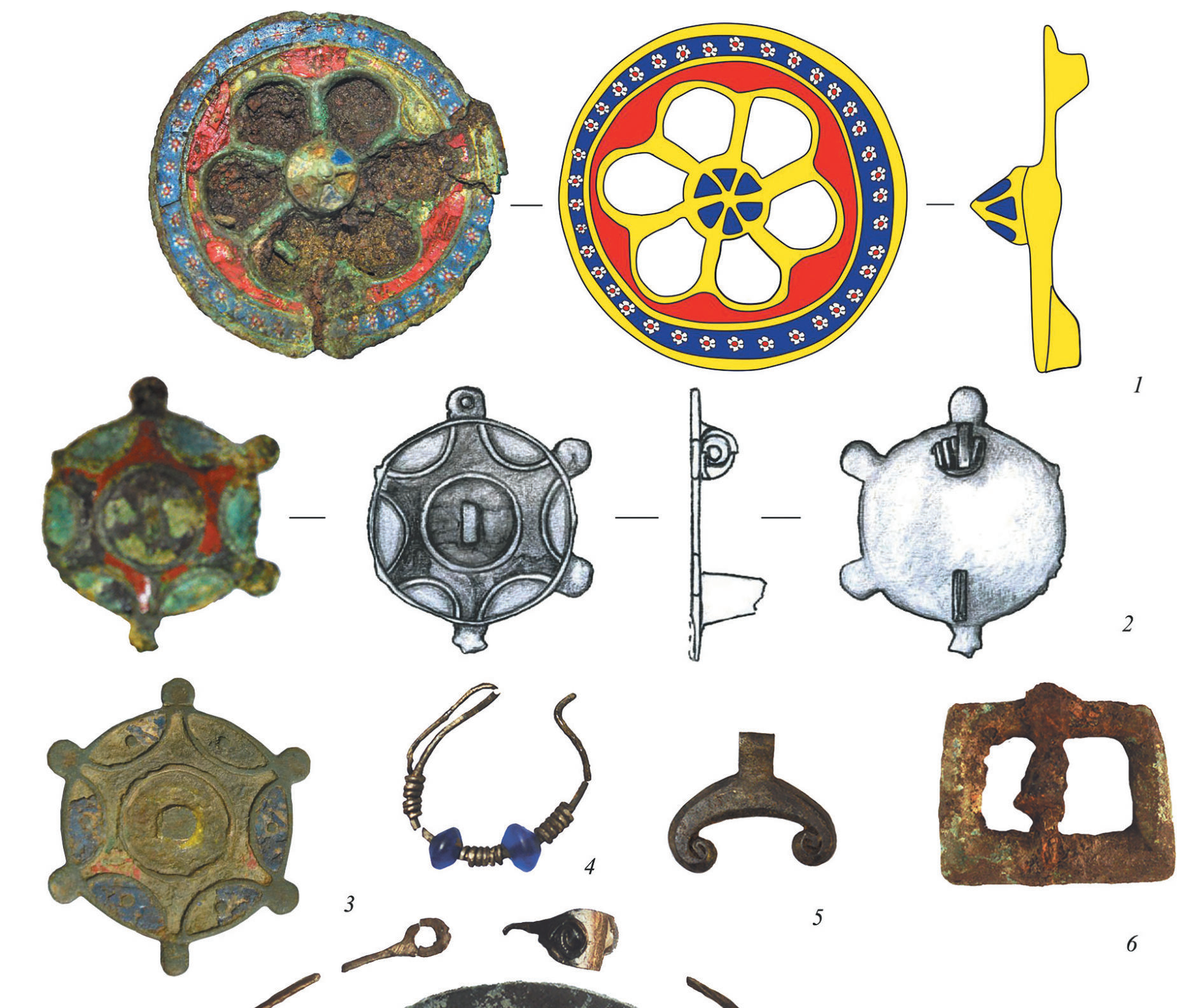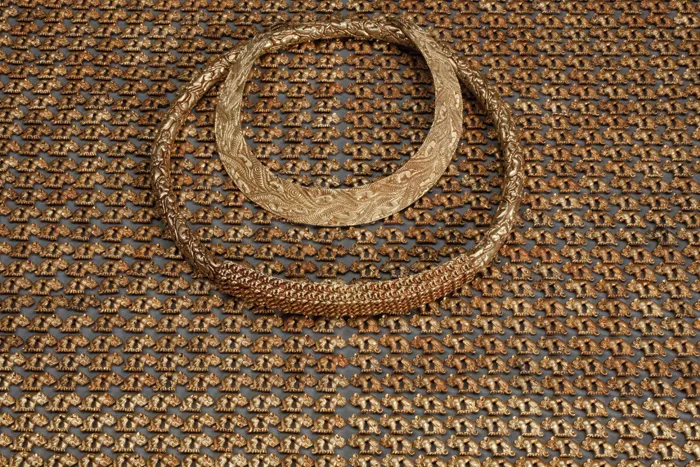Sarmatian. Female burial dated to the 4th C BCE. A Caucasian woman who died at the age of about 50 years [55-60 y/o]. She was buried dressed in embroidered dress, with the gilded bronze torc [grivna] and two bracelets, gold rings, carnelian beads of a necklace, bronze pot, items related to the process of scarring or tattooing. The woman suffered from quite serious diseases of the spine. Her left hand was replaced with a prosthesis with a ring on her ring finger.
Могильник Кичигино / Кичигинские курганы, South Ural
The Kichigino mounds (Kichiginsky hill) are a Sarmatian aristocratic family burial place of the early Iron Age (4th century BC). The burial ground includes 11 barrows.
In 2007, the archaeologists began excavating mound No. 3. The central burial turned out to be looted, but the researchers found five burials, two of which are male and three are female. The men were horsemen, they were buried along with quivers and long iron swords. Two women also had quivers with over 150 arrows at their feet.
“Here we can recall the custom of the Sauromatians, which Herodotus describes. Among the Sauromats, young women, as well as young men, train, ride horses, shoot from a bow, and take part in hostilities. And when a woman gets married, she stops doing military work and devotes herself to family life, raising children and caring for the household,” Tairov explained. That is why, according to the scientist, there were no arrows in the burial of a 50-year-old woman.
On the neck of one of the women was put on a massive bronze torc in the Scythian animal style and covered with gold foil. On her hands were bronze bracelets in gold foil, beads made of carnelian and banded (Indian) agate. At the woman’s feet was a bronze pot, and also lay a mirror of an unusual shape. This woman was called “Sarmatian priestess”.
In female burials, many other things and jewelry were found, including hryvnias. As Tairov said, the technology of their manufacture is of particular interest. The Sarmatians took a bronze or iron rod and wrapped it in a fairly thick gold leaf. As a result of this technique, the product seemed to be completely gold, but in fact it was bimetallic. The graves of two young women contained rather simple ornaments, the so-called wire torcs. And in the burial of an elderly woman there was a hryvnia, the ends of which are made in the animal style” https://www.drive2.ru/c/456023823083373533/
In 2007, a burial of a 50-year-old woman was discovered during the excavation of burial mound No. 3 at the Kichigino burial ground (Uvelsky District, Chelyabinsk Region). The sleeves and top of her dress were embroidered with small beads, and the cuff of the right sleeve was also embroidered with leaves of thin gold foil. Both wrists were decorated with spiral-shaped bracelets, which were made of bronze and covered with gold foil, and with strands of cone- and spindle-shaped beads made of stone and glass. The ring finger of her right hand was adorned with a spiral-shaped ring made of round-section gold wire. Her left hand was probably replaced with a prosthesis made of organic material, with a similar ring on one of the fingers. The woman’s neck was adorned with a torc with zoomorphic ends: scientists believe that they depicted boars. The torc’s bronze base was wrapped in gold foil.
A mirror with a long side handle, decorated with an ornament of concentric circles, lay on the forearm of the deceased. It was stored in a decayed leather case, which also contained a human tooth and a piece of chalk. A small rock crystal lay next to the mirror. A small bronze pot on a conical base stood at the feet of the deceased.
It had a vertical handle on one side and a spout on the other. There were traces of carbon residue on the inside of the pot. Below her right hand lay a sharpening stone, iron knives, an awl, and a bone spoon.
The collection of beads includes pendants made in Indian and Iranian handicraft workshops. The beads made of white, brown, and black agate were probably manufactured on the territory of Achaemenid Iran.
The valuable grave goods and rare objects found inside the burial point at the high social standing of the deceased woman. She probably came from an aristocratic family that controlled a large forest steppe territory of the Southern Trans-Urals. Experts believe that the bronze pot was used to make herbal infusions. This suggests that the buried woman was a healer, or, as journalists argued, a priestess.
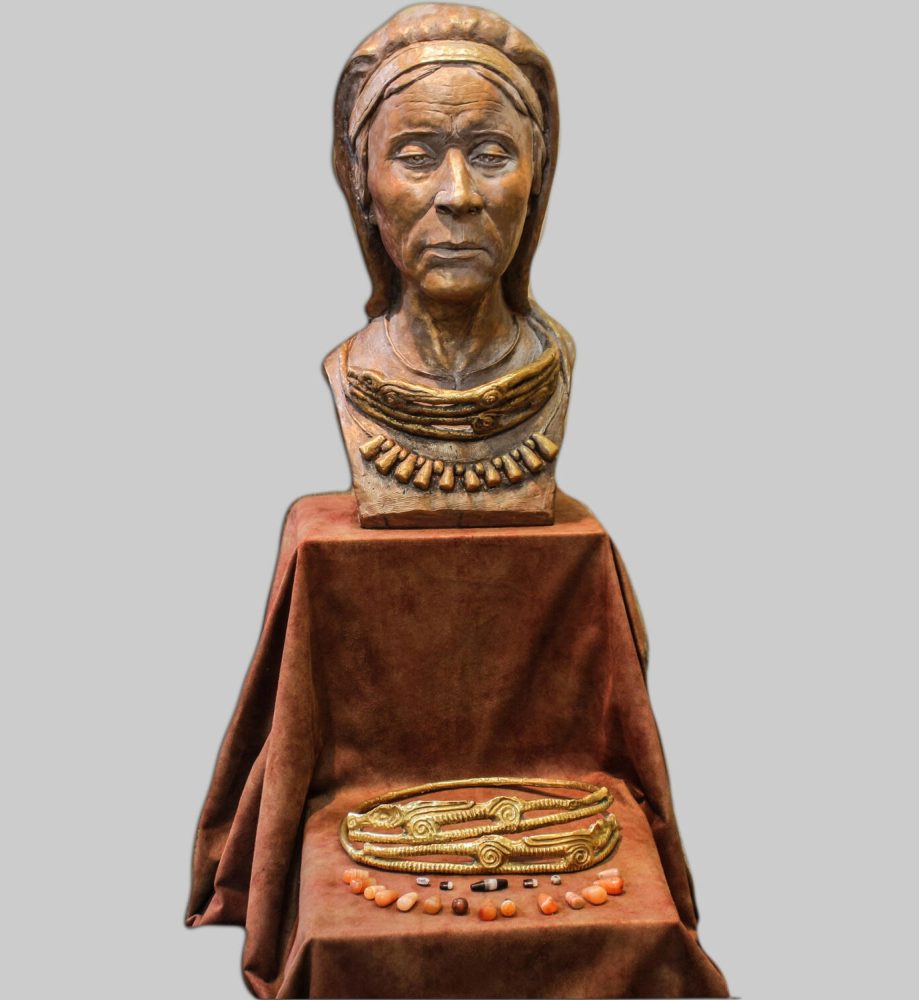
©State Museum of the South Ural History



Historical Museum of the Southern Urals
https://uraloved.ru/kichiginskie-kurgany
